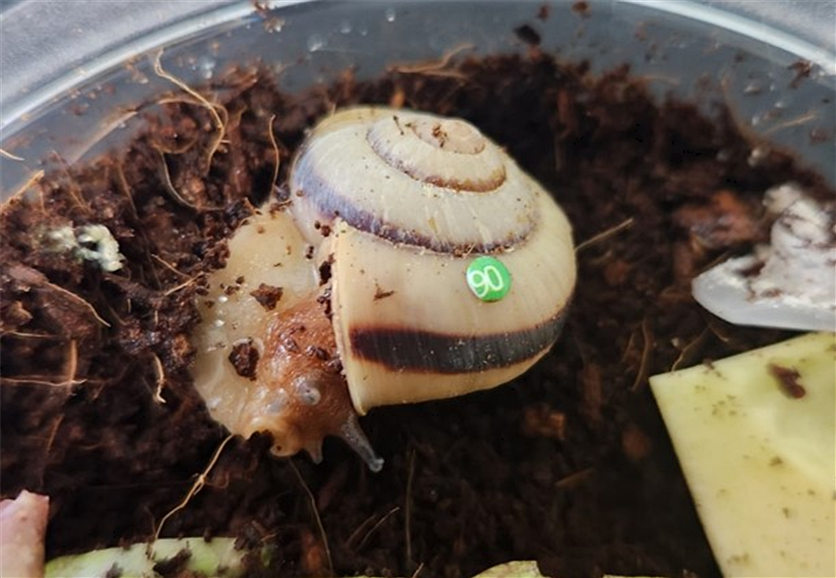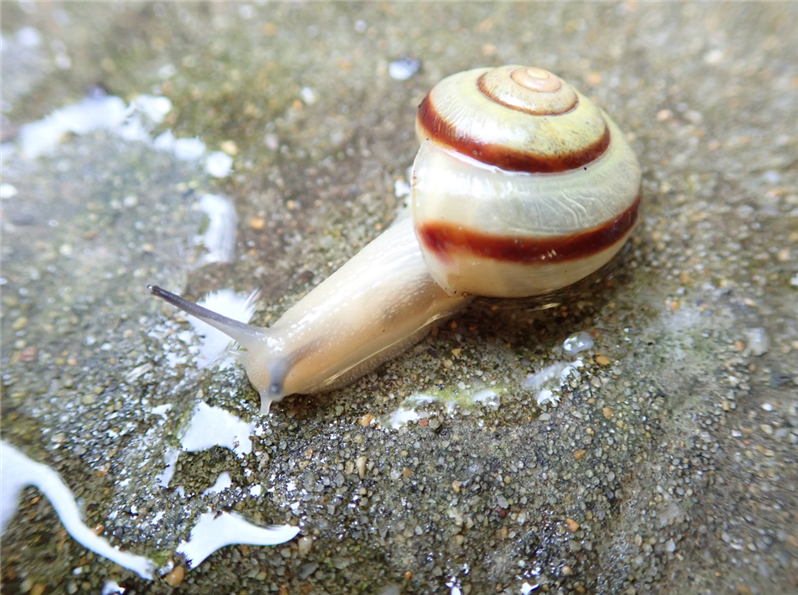20 endangered Koreanohadra koreana Released after artificial propagation
- 남주원 기자
- 2023.09.07 17:05

20 endangered Koreanohadra koreana through artificial propagation were released.
The National Institute of Ecology's Endangered Species Restoration Center, under the Ministry of Environment, Republic of Korea recently released 20 artificially propagated Koreanohadra koreana in the natural habitat on Hatae Island, Shinan-gun, Jeollanam-do.
The Koreanohadra koreana is a class II endangered wild species and a native species of South Korea that was first reported in Hong Island, Shinan-gun. In 2019, it was also newly discovered on Hatae Island, one of the islands in Shinan-gun. Hatae Island is located approximately 35 kilometers southwest of Hong Island.
뉴스펭귄 기자들은 기후위기와 그로 인한 멸종위기를 막기 위해 헌신하고 있습니다.
정기후원으로 뉴스펭귄 기자들에게 힘을 실어 주세요.
이 기사 후원하기
The Endangered Species Restoration Center previously introduced five Koreanohadra koreana from Hong Island in 2018 and successfully artificially propagated them. Then, they conducted the first natural release on Hong Island in July of last year.
This release is the second release following last year and was conducted at Hatae Island on the 31st of last month. Out of a total of 30 Koreanohadra koreana that were additionally introduced and artificially propagated from Hatae Island in 2021, 20 healthy juveniles were selected and released.

The Koreanohadra koreana were released in the beginning of mountainous areas near villages because it is advantageous for consuming calcium, which is essential for snail growth and survival. The National Institute of Ecology explained, "Cement structures or stone walls rich in limestone are necessary calcium sources for Koreanohadra koreana's survival. It's in the same context that snails are often observed on building walls after rainfall."
This part shows the fact that Koreanohadra koreana use the place close to human-inhabited areas their ground of life for survival. This ecological characteristic is also the reasons why Koreanohadra koreana need for greater attention, as they are significantly influenced by human activities.
The 20 Koreanohadra koreanas released this time will be monitored alongside the population of snails on Hong Island to study their distribution characteristics and natural adaptation. The plan is to recapture them using tags attached in the future, determine their survival and growth rates, and analyze threats to their surrounding habitat.

Meanwhile, the Koreanohadra koreana, a endemic species to South Korea, is on the brink of extinction. Its habitat range is extremely limited to certain islands areas in Shinan-gun. As a result, damage to a small population could directly lead to the extinction of the entire species.
They are threatened by environmental changes due to the climate crisis and the spraying of pesticide such as herbicide, and are sometimes quietly stampeded to death amidst the indifference of visitors to the island.
The National Institute of Ecology stated, “The ecosystem is tightly interconnected like a net. Just as the net becomes gradually weaker when it is broken one by one, the balance of the ecosystem is lost when species disappear one by one.”
They emphasized, "The land snail is also a member of the ecosystem and has the potential as a biological indicator that can represent environmental change. Preserving small creatures that may seem distant from human life is the starting point for protecting biodiversity."
뉴스펭귄은 기후위험에 맞서 정의로운 해결책을 모색하는데 초점을 맞춘 국내 유일의 기후뉴스입니다. 젊고 패기 넘치는 기후저널리스트들이 기후위기, 지구가열화, 멸종의 위험성을 알리기 위해 분투하고 있으며, 그 공로로 다수의 언론상을 수상했습니다.
뉴스펭귄은 억만장자 소유주가 없습니다. 상업적으로나 정치적으로나 일체의 간섭이 없기 때문에 어떠한 금전적 이익이나 정치적 이해관계가 우리의 뉴스에 영향을 미치지 못합니다.
뉴스펭귄이 지속가능하기 위해서는 여러분의 지원이 필요합니다. 우리는 여러분의 후원을 밑거름으로, 게으르고 미적대는 정치권에 압력을 가하고 기업체들이 기후노력에 투자를 확대하도록 자극할 수 있습니다.
아무리 적은 금액이라도 여러분의 소중한 후원은 기후위험으로부터 우리를 지키는데 크게 쓰입니다.
뉴스펭귄을 후원해 주세요. 후원신청에는 1분도 걸리지 않으며 기후솔루션 독립언론이 강력한 영향력을 발휘하도록 만듭니다.
감사합니다.
후원하러 가기
